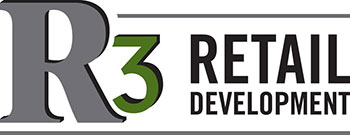There is ample industry buzz regarding lowering overhead costs through lowering energy cost to run your company. For small to medium sized retail environments, the Pacific Northwest National Laboratory, managed by the Department of Energy, says approximately 21% of your energy use is through lighting.
When it comes to lowering energy consumption with lighting, the go-to resolution is to convert your lighting to LED. The Department of Energy reports 75% or more energy savings by converting downlighting to LED. 75% energy savings is fantastic! However, if your company is committed to making an environmental impact by reducing consumption, then becoming green doesn’t stop there, which is great news for you.
To be energy efficient means making a change to a system and implementing a product that requires minimal energy to produce the conventional output of that product. To truly maximize profits, and optimize your business to be green, energy management should be the yang to the yin of energy efficiency. Energy management means making habitual changes to conserve the energy you use. Did you ever get scolded by your parents to turn the lights off after leaving a room? As time went on, you likely changed your habits out of fear of getting in trouble, or as an adult after seeing your electricity bill. You may even find yourself repeating the same phrases to your children!
The same can be said for your business. To put it simply, your company wants to be diligent in how lighting is used, not just diligent in what lighting your company uses. The implementation of an energy management system will convert your energy efficiency plan into a robust, energy conscious plan.
At R3, we work in tandem with companies making the dive into LED conversions to implement Lighting Control Systems, a form of EMS, so your company can identify when and where you are using energy when it is not needed. This leads to making the necessary habitual changes in how lighting is used in your store’s environment.
For example, in many cases in the retail environment, store openers and closers will complete the opening/closing tasks in full lighting when it may not be necessary. Accent and decorative lighting is used to create draw from your customers to specific zones or products you want to market. In other words, accent and decorative lighting is not necessary during staging or stocking. With the implementation of a lighting control system, your store’s lighting can be managed to turn on and off at more appropriate times throughout the day. These small changes add up over time, ultimately adding to your bottom line.
With R3 on your side, you can relax as we do what we do best! We help identify the habits that can be changed through Lighting Control Systems, so your company doesn’t have to, and can more easily foster an environmentally conscious culture. If your company is considering converting to LED lighting, contact R3 to learn more about how implementing a Lighting Control System in your facility can help maximize your profit by lowering energy costs.
